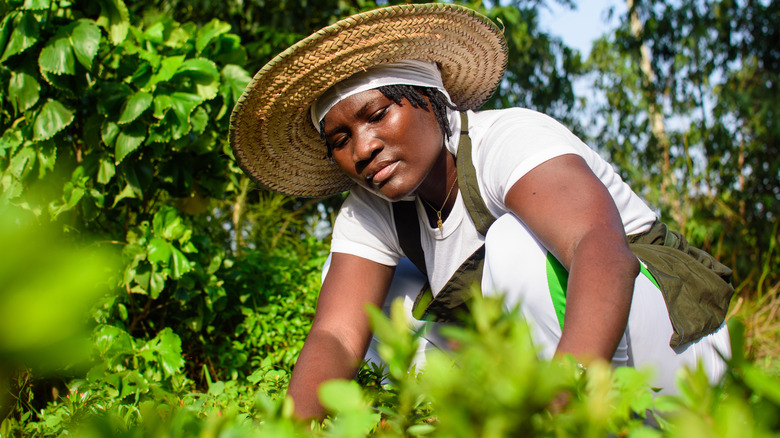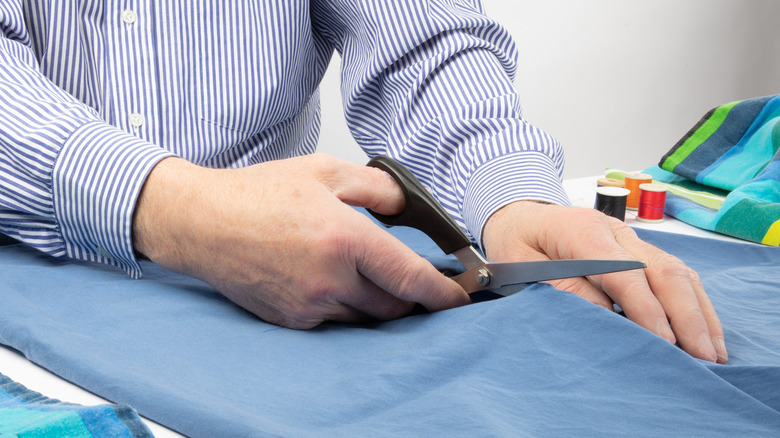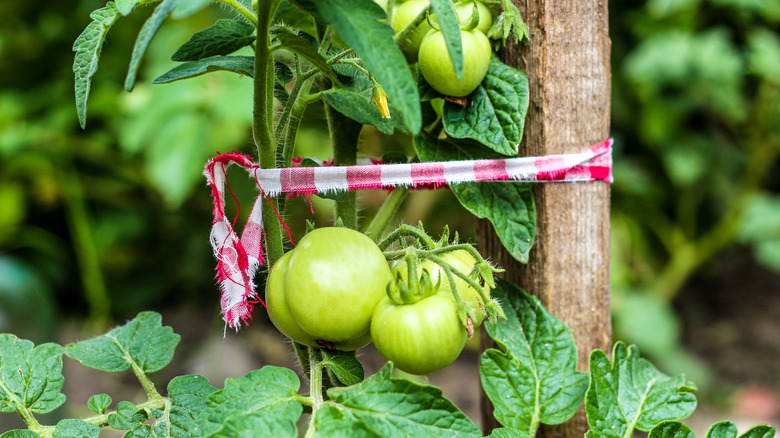Help Your Plants Grow By Repurposing Old Pillowcases
Tying unstable plants is a regular part of every gardener's routine, especially for finicky growers like tomatoes. However, tight wire, plastic, or twine can put pressure on your plant stems and damage them. Instead, it's best to use a wide, soft tie that distributes the pressure and supports the stems rather than pinching them. Velcro straps can be a smart solution, but when you have several plants that need to be tied and supported, you'll blow through a roll quickly. Instead of spending money on velcro strips, crochet yarn, or other fancy ties, take a look at the back of your linen closet. Pillowcases, sheets, and other old materials can easily be repurposed into plant ties. Simply cut your old, unwanted pillowcases into strips, secure them to your plants, and you're good to go!
Tomato plants don't always need ties while they're growing, but as soon as they start to produce fruits, the weight can cause them to topple over, spoiling your harvest. Tying up tomato plants also helps to increase airflow, allow for more sunlight, and keep the fruits away from pests, so it's always smart to tie your tomatoes for an increased harvest! Learn more about the steps for turning old pillowcases into handy garden tie strips and how to properly support tomatoes and other plants.
How to make garden ties from pillowcases
Creating garden ties with old pillowcases is remarkably simple — you'll hardly even have to lift your scissors! Start by laying your old pillowcase flat on a table or the floor. With a sharp pair of fabric scissors, cut up from the mouth of the pillowcase, following the long seam on one side. Stop when you reach the corner, but don't cut the other sides just yet. Instead, move your scissors back down to the mouth of the pillowcase. In the top fabric layer, cut a short slit perpendicular to the long edge, creating a little tab about 1 inch deep and 1 inch wide. Put the scissors down, and grab a strong hold on the fabric tab, then pull it hard to start tearing a strip away from the pillowcase.
Repeat the snipping and tearing process until you've unraveled your pillowcase into several long strips, working your way from the mouth to the corners of the pillowcase. Pulling the strips this way instead of cutting them will save time and give you perfectly straight lines because you're tearing with the grain. Of course, if you're having difficulty tearing, you can also cut the pillowcase into strips, just try to cut with the grain to avoid unraveling. Finally, you'll have several strips perfect for tying plants!
Using your strips and other tips
Now that you've transformed your old pillowcase into a handful of tying strips, you can use them to support your tomato plants and other tricky growers. One of the best things about this hack is that the fabric strip lengths are customizable. Use longer strips to wrap around multiple stems, or cut the long strips into smaller pieces to secure a single stem to a wire cage, trellis, or stake. You'll want to place a tie about every 6 to 8 inches on the plant, adding more as the plant grows taller. Try to wrap the long strips around your plant at least twice to further distribute the weight, but make sure that your support stays about 5 inches away from the plant.
If you don't have any old pillowcases, you can also use blankets, cotton T-shirts, dishcloths, towels, and other soft materials. Natural, sturdy items will work best for this hack because they tear easily, are eco-friendly, and are more durable in the sun and rain. The goal of this hack is to help you save money and avoid waste so you don't need to buy any new fabric. Instead, consider going to thrift stores near you to pick up old sheets and blankets. Many times, old bed linens won't sell well because they have an "ick" factor, but they're perfect for repurposing into ties for your garden!


